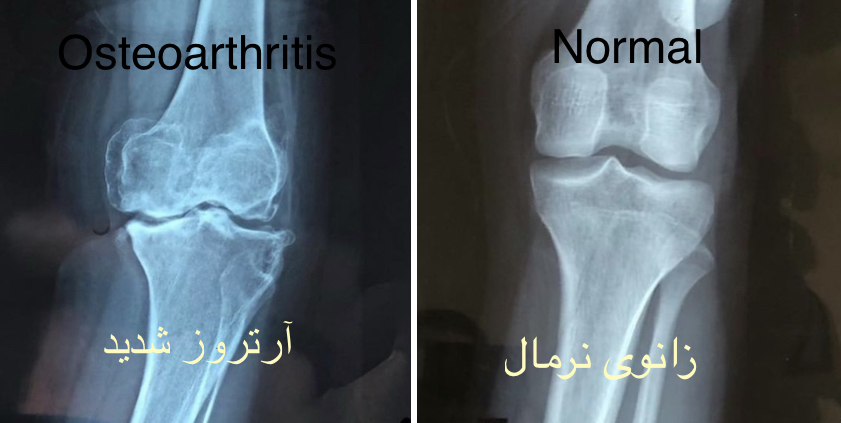Osteoarthritis

What is arthritis?
What are its causes, diagnosis and treatment methods?
What are the prevention ways?
In simple language, arthritis means wear and tear of the joint. Naturally, wear and tear has stages and degrees, and different people refer to it with different intensity of involvement.
Arthritis may be primary, that is, without any specific cause or disease, or secondary due to some injuries and diseases, such as joint fractures, as well as ligament and ligament damage, or a history of infection, or some internal or systemic diseases, such as rheumatism or gout.
The predisposing factors of primary arthritis actually include two general categories
Factors related to the person himself and external factors that affect the person's body
The factors related to the individual include heredity and family history, female gender and increasing age, none of which can be changed.
However, the environmental factors that can be controlled to prevent the occurrence or progression of arthritis are, in order of priority, high weight, excessive activity and damage to the joint, such as sitting on the floor with two knees or four knees, walking up stairs, using a normal toilet. or excessive inactivity and muscle weakness
Also, the effective nutritional factors in arthritis are excessive use of saturated foods and free radical generators in the body, such as salt, frying oil, red meat, fast foods, and less use of antioxidants, especially vitamin C and E, which are found in foods such as ginger, cinnamon, elderberry, and dried figs. Soy, turmeric, honey, avocado are found in abundance
The most important method of diagnosing arthritis is history examination and simple radiography
In the biography, the person mentions a similar history in his parents and relatives
The person's type of pain is active and aggravates after doing the activity and gets relieved with relative rest
In the person's examination, a change in the shape of the body in the form of a bent knee and swelling may be seen
In obese women, swelling of the fat mass is seen in the upper part and inside the leg
When touching the knee, the pain is concentrated in the inside and under the knee, and sometimes there is an increase in joint fluid, so the knee is swollen
In advanced stages, there is movement limitation and the knee does not fully open and the terms behind the knee do not reach the bed
In the radiograph of the joint, which is done standing and bilaterally, the reduction of the joint space and the sharpening of the bone edges and sometimes the cartilage parts inside the joint are seen.
The treatment of the disease depends on the stage and severity of the disease and the age of the person, as well as the history of previous treatments
At the beginning of work, lifestyle changes and weight loss and exercise are recommended, and sometimes special drugs are prescribed
Intra-articular injection and physiotherapy may be used in more advanced stages
In some cases, there may be interventions to correct the underlying factors such as correcting the axial deviation of the knee
Finally, cases that do not respond to any treatment or are in the final stages are subjected to joint replacement surgery
Share :
 English
English
 Persain
Persain

Add New Comment